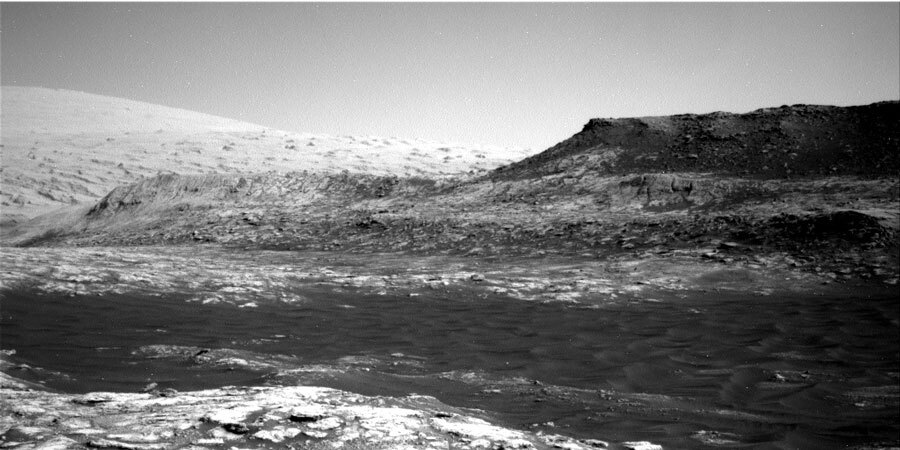2 min read

Curiosity is making good progress on the way to “Bloodstone Hill,” an interesting bright outcrop visible on the left side of the above Navcam image. The plan is to drive around the large sand patch and then make our way up to the hill, hopefully sometime next weekend. But before we get to “Bloodstone Hill,” there’s a lot of great science to be done this weekend! While most of us see weekends as a time to take it easy, the opposite is true for Curiosity. Weekends provide the opportunity to do full contact science, including use of the DRT, MAHLI, and APXS, in addition to a drive and lots of science!
I was the SOWG Chair today, and the team put together a very full plan. On the first sol, we planned a number of ChemCam targets to assess the chemistry of the bedrock in our workspace, including typical bedrock, nodules, veins, and exposed stratigraphy. The first sol also includes associated Mastcam documentation of the Chemcam targets, a Mastcam sky column observation to monitor the Mastcam instrument optical response, and a large Mastcam mosaic of “Bloodstone Hill.” Then Curiosity will use the DRT to clear off a fresh surface at the target “Hedgeley Moor,” followed by MAHLI imaging to characterize sedimentary structures and the surface texture of this target, and then use APXS overnight to investigate its chemistry.
The second sol kicks off with systematic MAHLI wheel imaging, followed by a short science block. This science block includes multispectral imaging of the DRT target “Hedgeley Moor,” Mastcam deck monitoring, and a Mastcam stereo mosaic of “Sandbank” to document nearby sand troughs. Then Curiosity will drive to the northeast, and take post drive imaging to prepare for targeting and driving on Monday.
The third sol includes a number of environmental monitoring activities including Navcam movies to search for dust devils, imaging to monitor the amount of dust in the atmosphere, a ChemCam passive sky survey to assess water vapor and dust in the atmosphere, and an autonomously selected AEGIS target. There is also an afternoon Mastcam sky survey and a morning science block early on sol 2795 to further monitor atmospheric activity.
Whether looking up at the sky or down at the rocks, there’s a lot to be done by Curiosity this weekend!
Written by Lauren Edgar, Planetary Geologist at USGS Astrogeology Science Center







